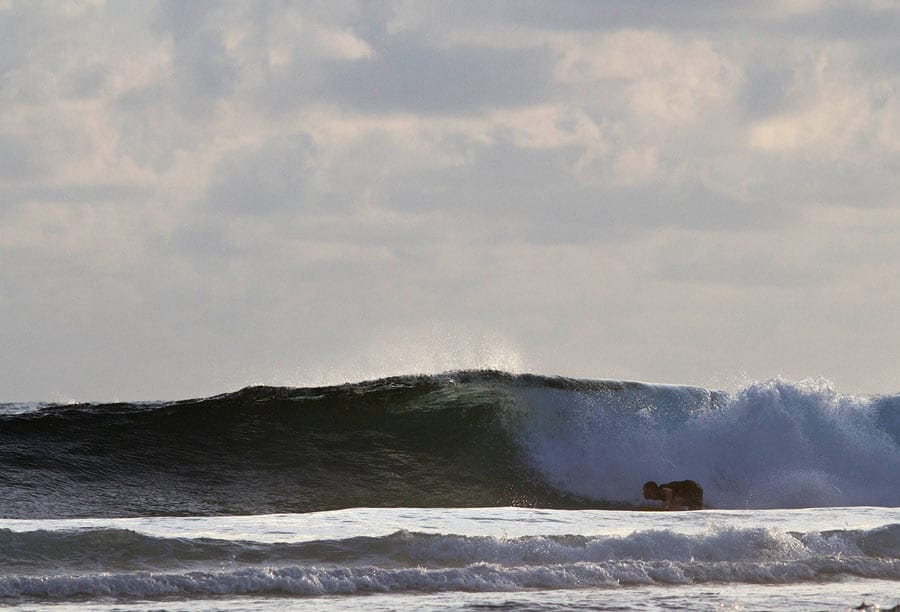Whenever we develop a new product, we like to have the opinion of our riders in order to base ourselves on the best feedback possible. That is why we are going to start a section in which they themselves explain everything concerning the Deflow product range.
Each one of our traction pads has been specifically designed in order to optimize its characteristics for a specific type of surf, conditions and boards.
In this case we have asked Legi Alonso, one of our ‘performance’ riders, to tell us a little more about them. Perhaps his advice will help you decide what grip to put on your next board.

Which traction pad should I use?
2 Piece Traction Pad
It is the pad with the most contrasted surface since it combines a smooth part (very soft) with another based on rough textures (very adherent), which makes it a very didactic and intuitive grip since this contrast helps us to know the height at which we are treading at all times.

Because of this, I always use it on boards where I move my foot a lot. For example, on short boards for small waves. These types of conditions are given to the foot moving forward to pump and achieve speed (stepping on the smooth part) and then being carried backwards at the moment of executing the maneuver (rough and more adherent part). Hence, this last surface has the super adherent texture on which to exert all our strength in the most critical moments.
It is also ideal for when you start to land your first airs or other maneuvers in which the foot loses some contact with the board. Once again, that pronounced change in its textures will help you position your foot more effectively.

3 Piece Traction Pad
This pad offers a softer touch throughout its entire surface. However, it has a double grip on its lateral parts (thick vertical bands, longitudinally perforated) in order to optimize its adherence at key moments such as the ‘bottom’ or the ‘cut back’.
Finally, it includes a small central bridge that indicates at all times the part of the grip that we are treading.
I use this grip model on narrower boards oriented to waves of a certain quality, generally ’round square tails’, since in them I move less the tread and I focus almost exclusively on stepping on the sides (areas of greater grip of the pad) in order to trace rail turns on the wall.


5 Piece Traction Pad
It is the narrowest and offers greater subtlety to our tread since it is flat and provides, only, a high friction in its outer limits, on both sides and in the rear area.
I always use it on ‘round tail’ boards as they tend to be narrower and geared toward a higher range surf where the most subtle movements prevail.
The higher the quality of the waves, the less it is pumped or stepped on in order to generate speed (the waves are supposed to have strength and supply that part), therefore we would focus on moving the board from edge to edge, without taking off of the wall. Hence, any other element is superfluous (very bulky textures, central bridge …).
Finally, the 5-piece grip has a very accentuated final block based on a classic grid texture, highly tested and infallible, in order to provide the greatest security in the most critical moments.


Front Pad
During the last few years, many of the more progressive surfers have started to use a front pad. Until now, I had never used it on my boards because I always thought it was silly, a mere ‘pose’ that was useless. However, after testing it, I realized that I was wrong and that, indeed, the front pad has a number of advantages to take into account. That’s why … We’d better dedicate a post to it (‘coming soon’), since, with all certainty, it will become a regular of my ‘air toys’ ;P


Do you always use traction pads?
When it comes to standard shortboards… Always!
In my case, it not only helps me to obtain a greater firmness in the tread (thanks to its grip or the rear stud), but it also helps me orient my foot, giving me indications about the way in which I step on each board.
It is clear that I will not use a grip in the case of a ‘single fin’ or another type of board in which I do not stop moving my feet or look for another type of ‘flow’. Nor does it make sense on longer boards (from 6’4 ” onwards, in my opinion) where the way of stepping and distributing the weight has nothing to do with that of a normal shortboard.
Want to know more about our traction pads? Discover our full collection here

Enjoy the latest news and get 10% OFF your first purchase
By signing up, you accept the terms of Deflow’s Privacy Policy.
Check our privacy policy here.
Enjoy the latest news and get 10% OFF your first purchase
By signing up, you accept the terms of Deflow’s Privacy Policy.
Check our privacy policy here.